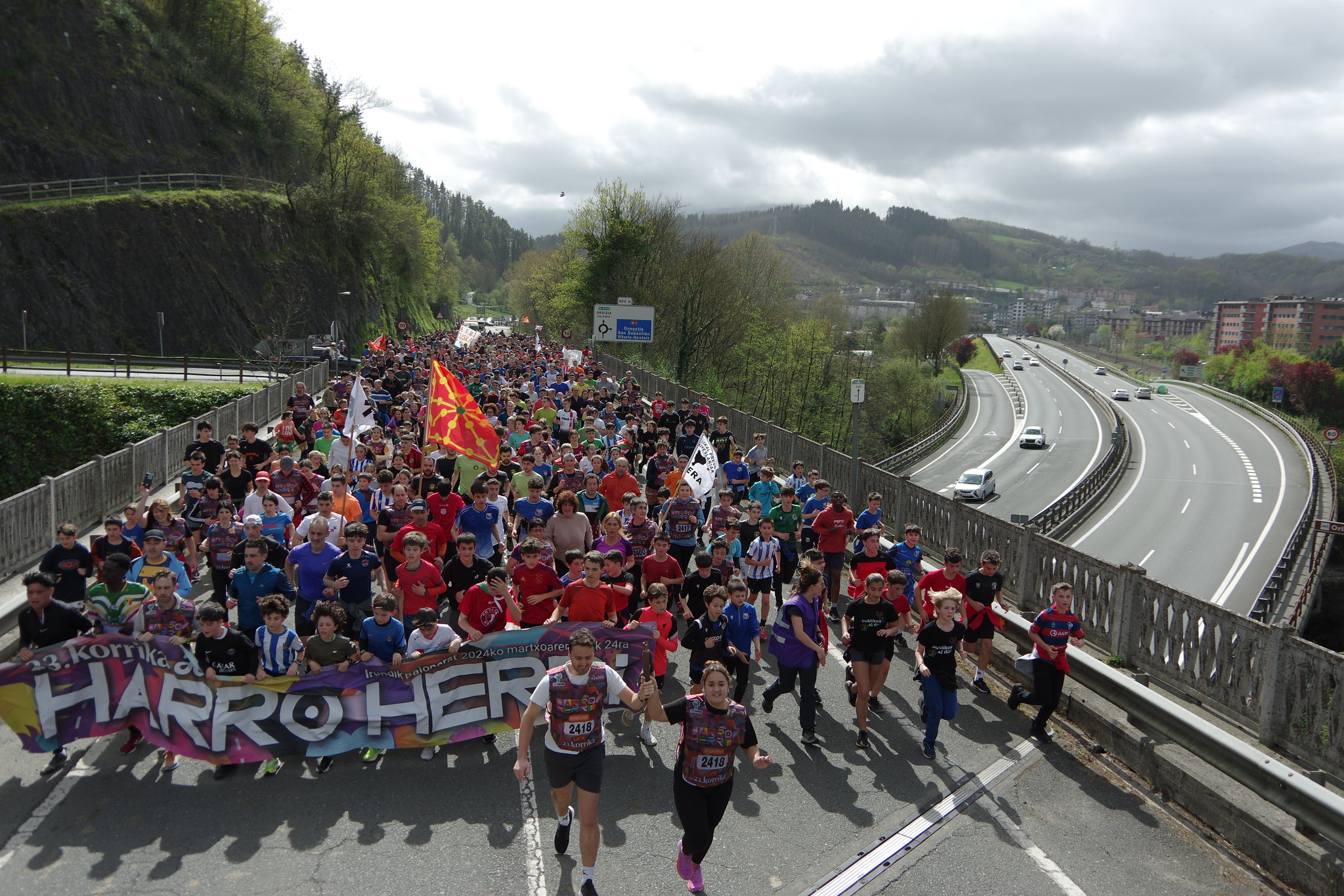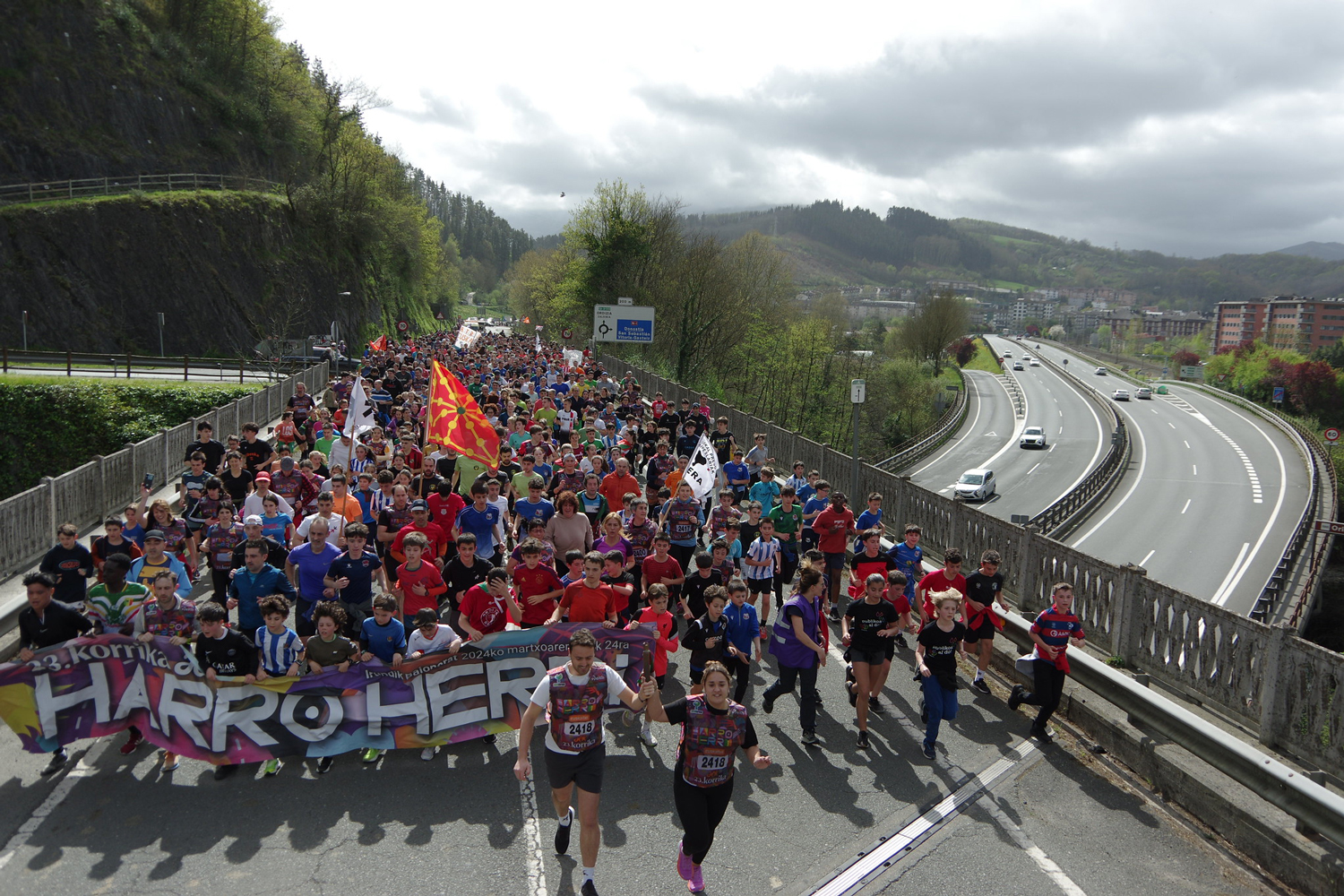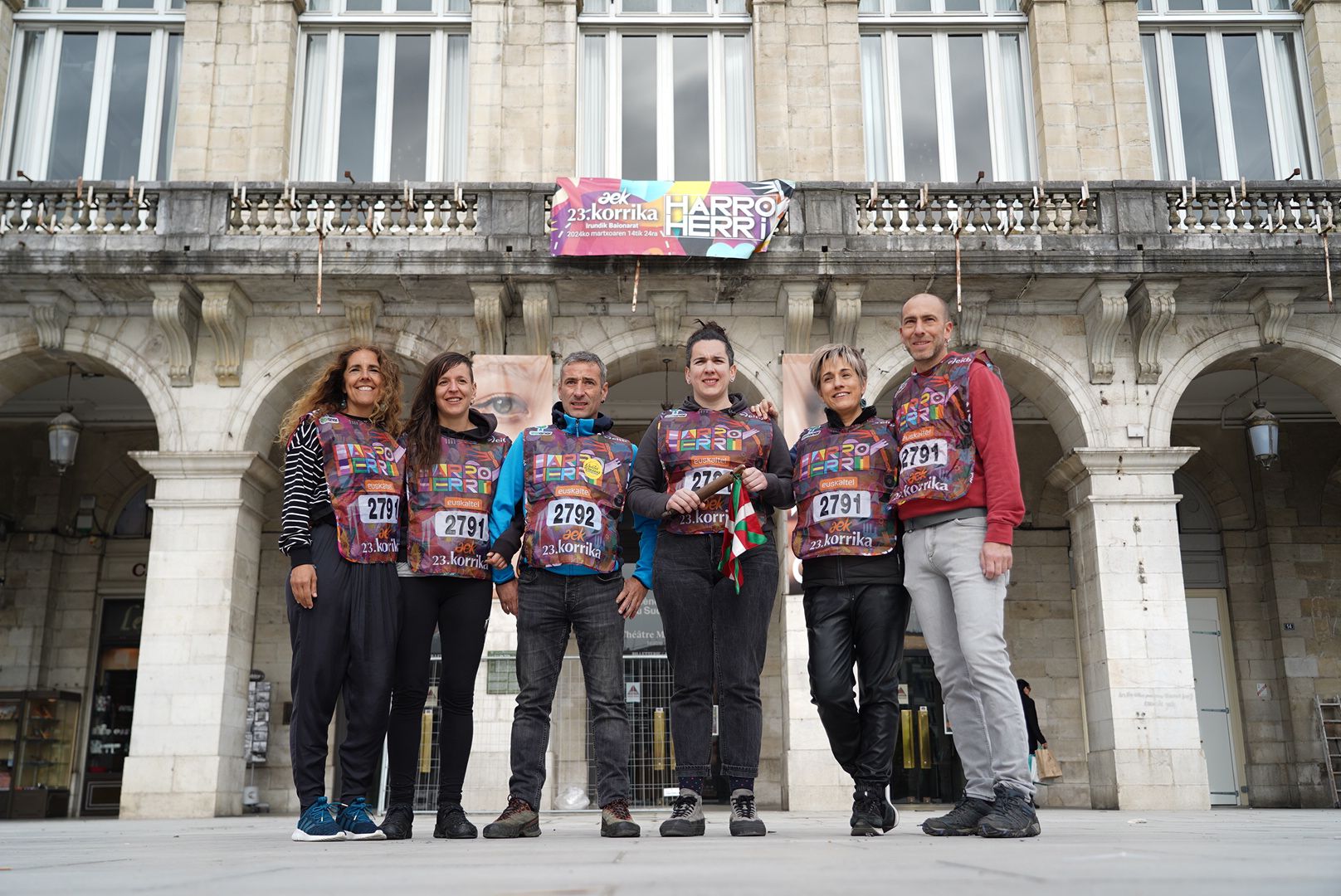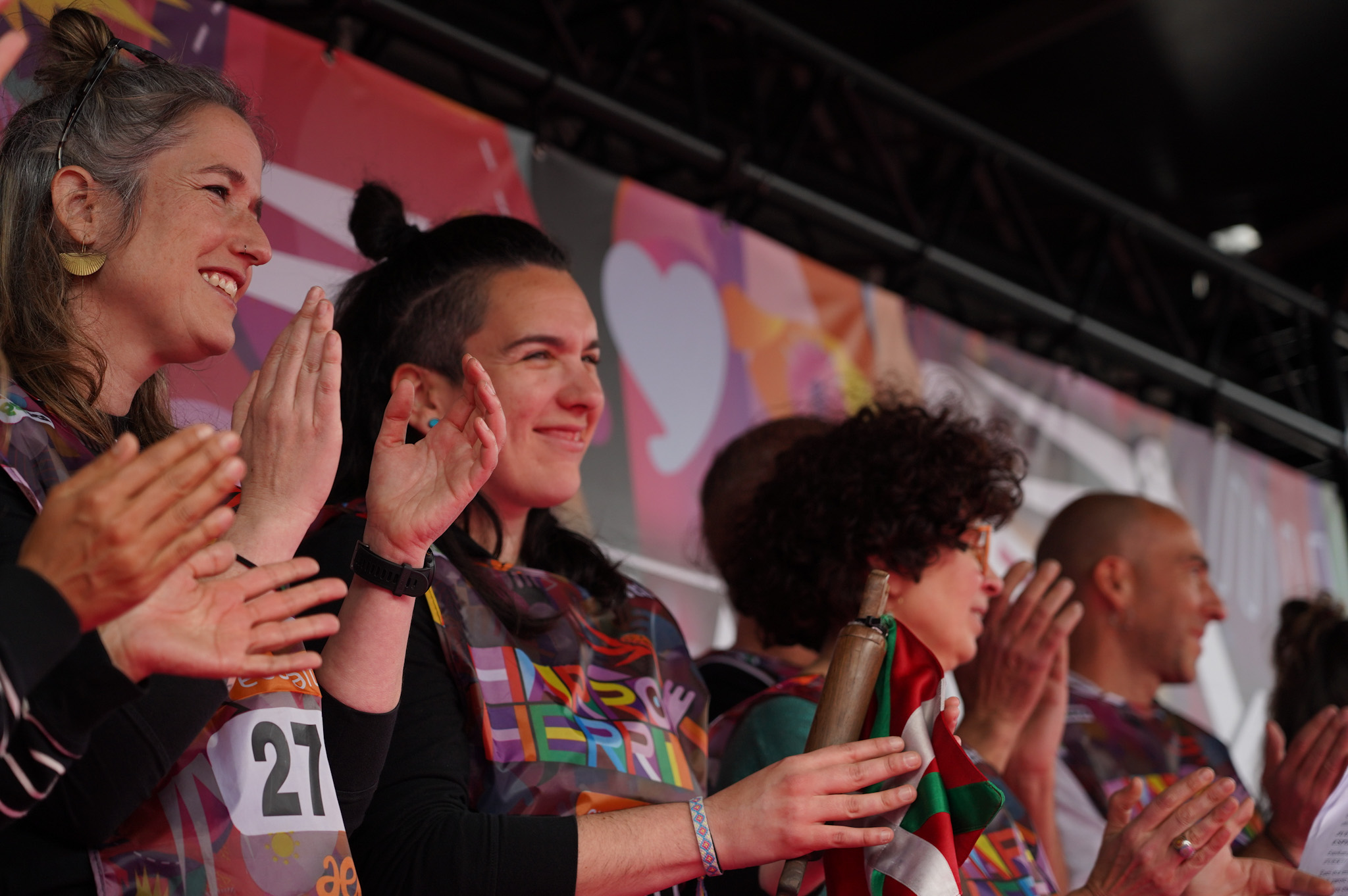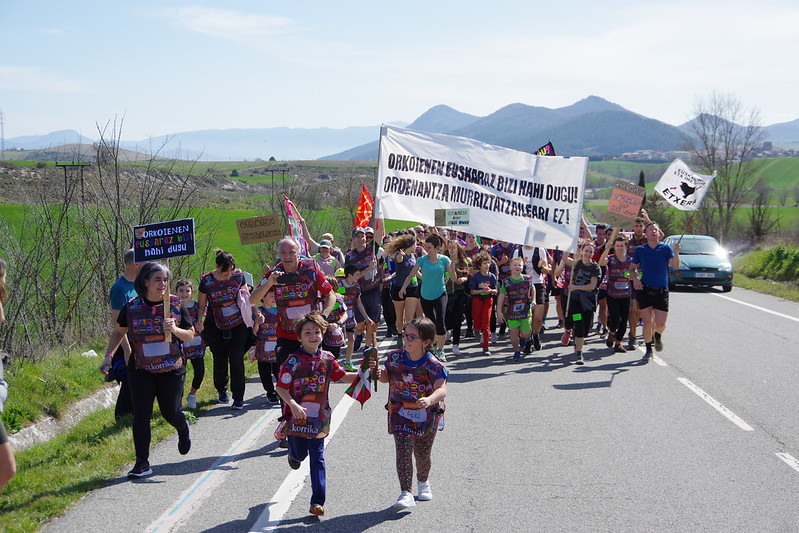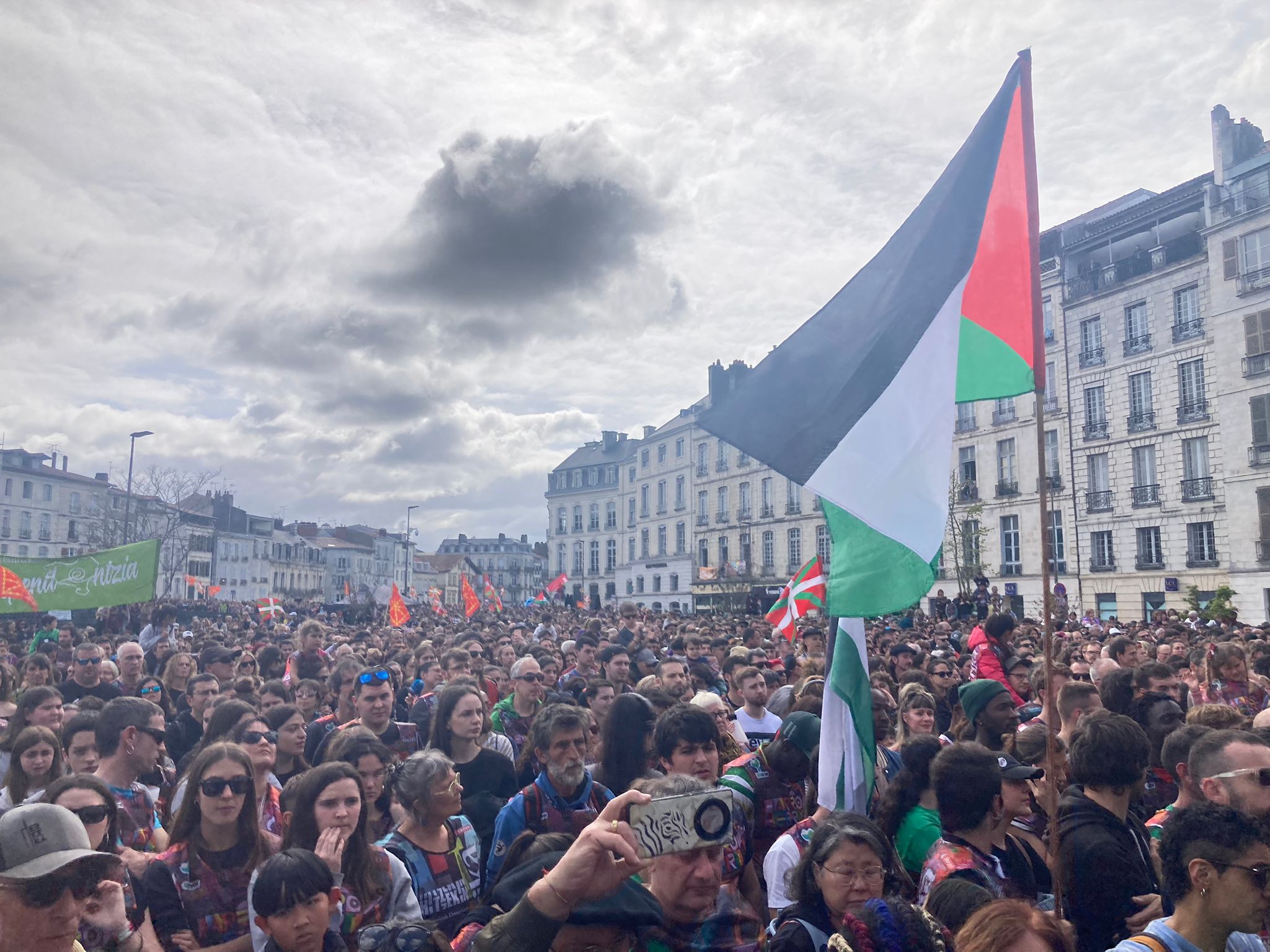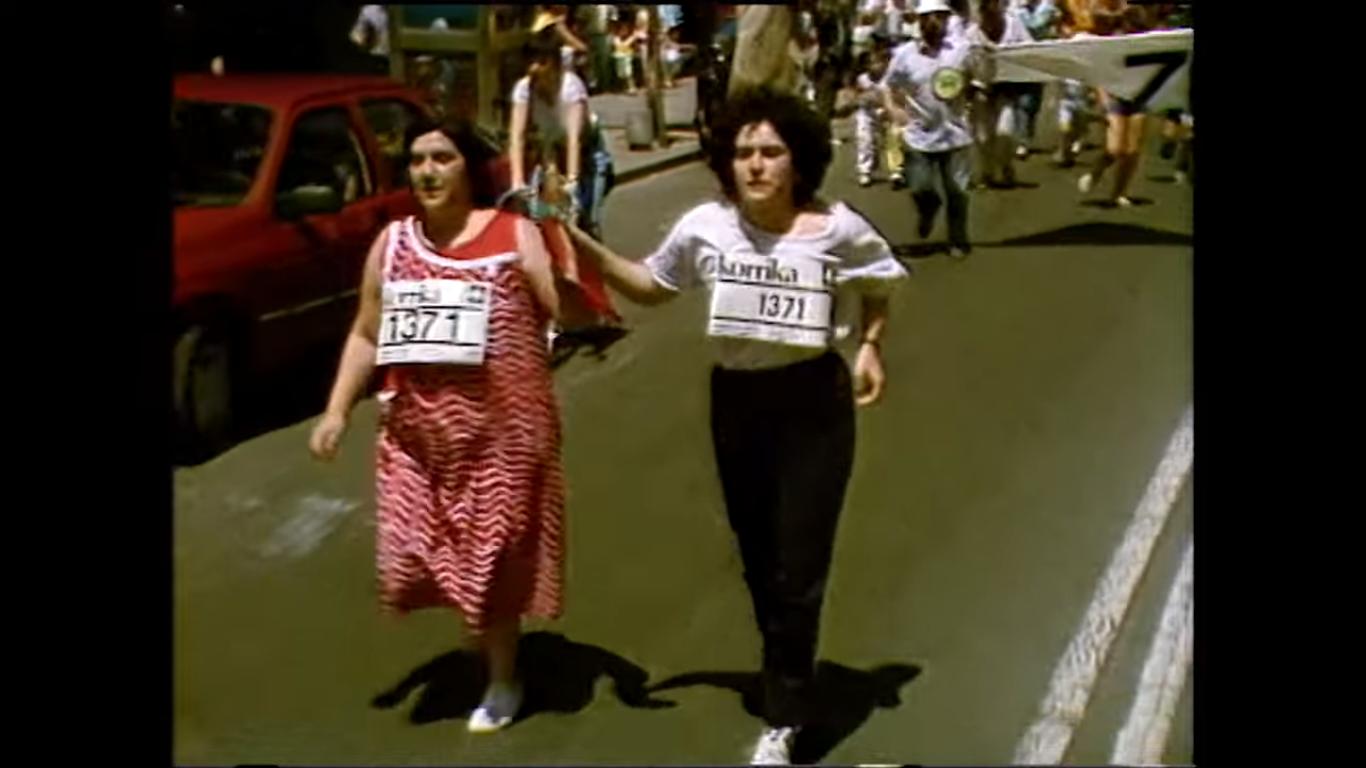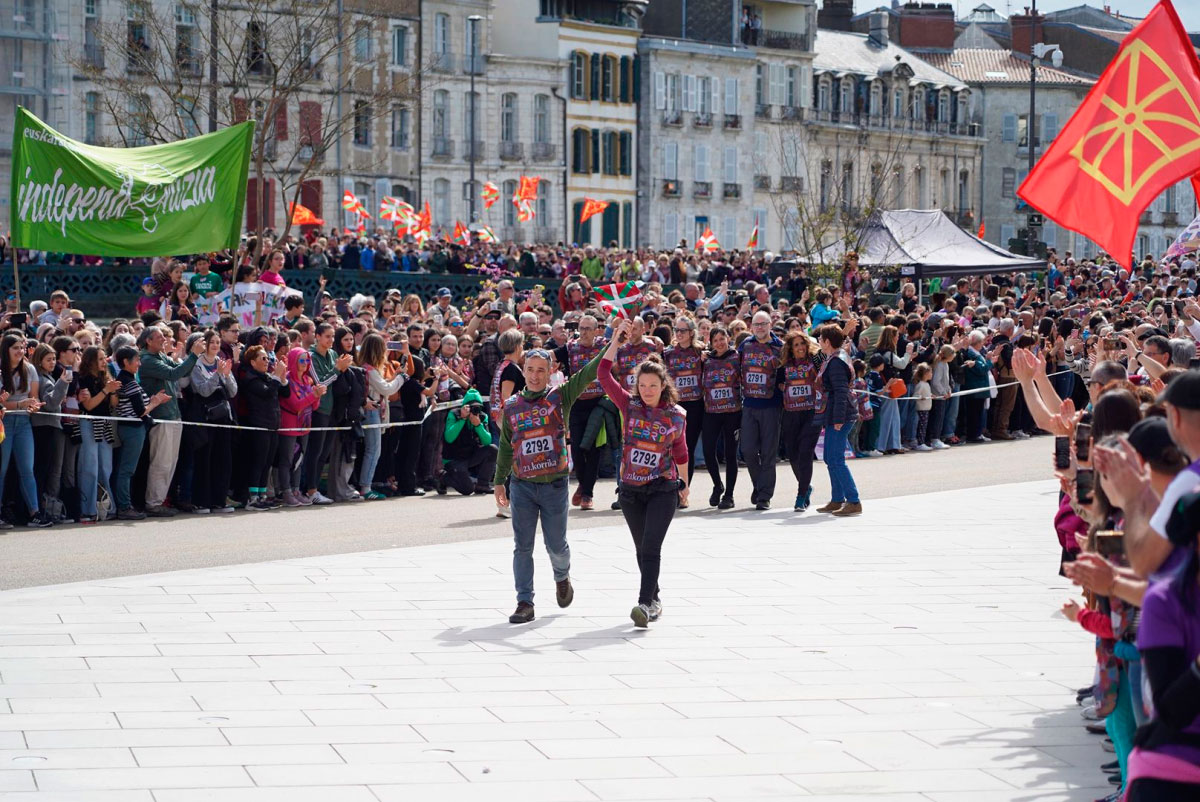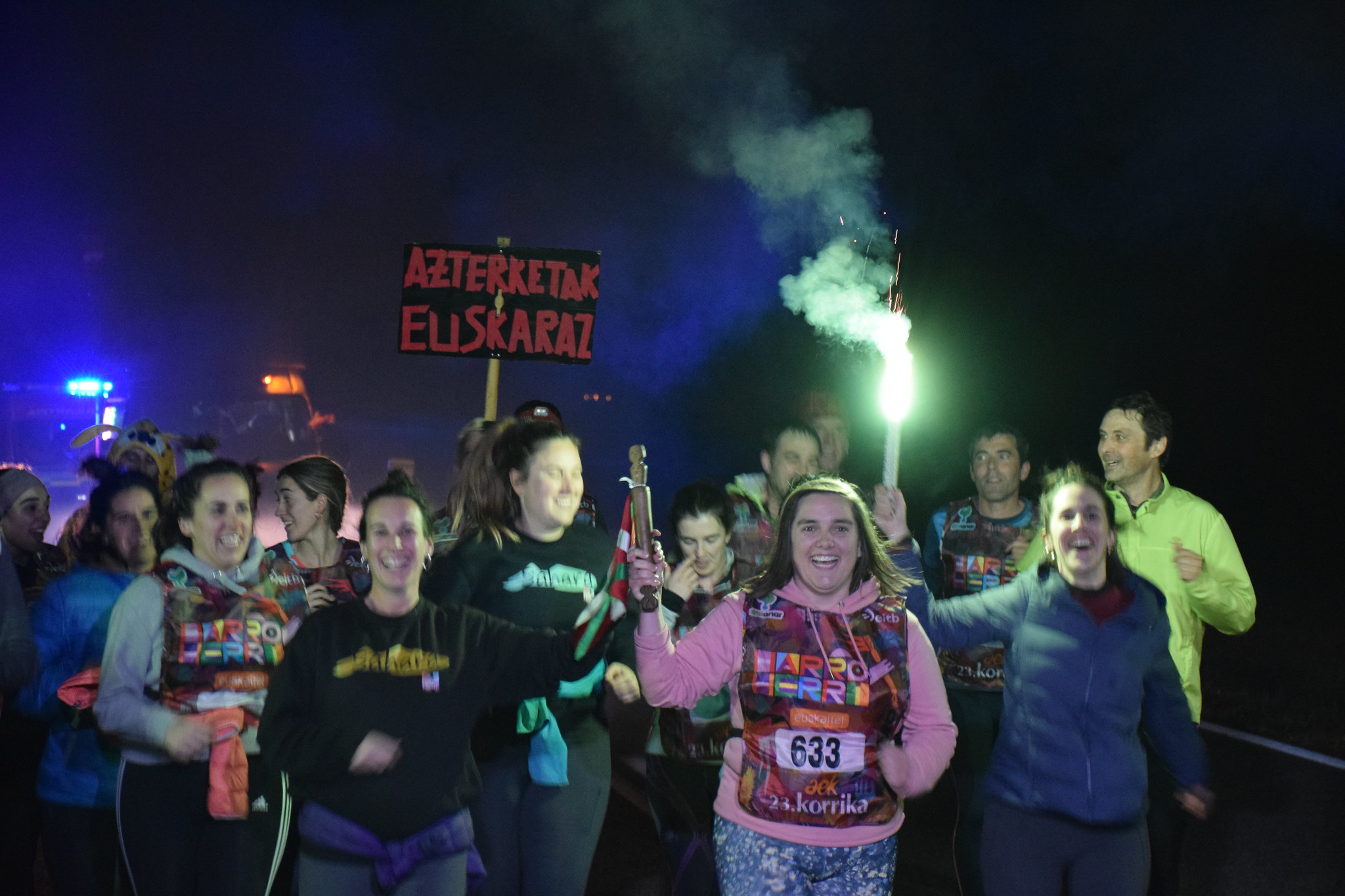
When we take the witness of the race and receive the gratitude and enthusiasm of others, it is inevitable that the interior will be noticed dancing. Moreover, after all life fighting for the Basque and against the impositions in Spanish. That is what has happened to them 23. To many protagonists of the Korrika, including Kontxa Laspiur Zabala. “I was born in Euskera in 1924 and I am going to die in Euskera,” stressed Laspiur, who is going to be 100 years old, unable to sustain tears, to a lot of media united to the height of Ipurua in Eibar. He took the witness for the first time in the Second Race, in Arantzazu, and recalls the moment: “We were representatives of seven territories, and I from Gipuzkoa, there. We did a few meters.”
Kontxa Laspiur, a former AEK professor who has Euskaldunizado Eibar for 100 years, has taken #23KORRIKA #HARROHERRI pic.twitter.com/6ofkNb9MAE
— AEK (@AEK_eus) March 20, 2024
In the 1,520 kilometer he has also traveled several meters in wheelchair, driven by his family, and along dozens of Basque students and teachers from Eibar. According to Laspiur, the town of Gipuzkoa is Castellanoparlante, and those who know Basque also do so in Spanish. However, the atmosphere between those who have come to recognise their colleague Kontxa on that kilometre is particularly vaschist. From the hug to the hug, attendees—almost all women—proudly announced that La Concha was her Basque teacher.
Teaching of the Basque in secrecy
“Between 2000 and 2003 I had a conversation with him at AEK,” says Julia Carballo Rey. At 78 years old and accompanied by a cane, he will not run, but he could not miss Laspiur's thanksgiving to the Eibarres and Basques. We are proud: “He started teaching Euskera underground, in bars and in associations, and then he’s been at AEK from the very beginning.” Laspiur awaits Korrika surrounded by a lot of students.
Also, Carballo began to Euskaldunize in secrecy. It is of Galician origin and came to Eibar at the age of 15: “When I arrived I felt something; it was clear that I had to learn Basque.” He began to approach the Basque in the classrooms of Elgues and assured that he never had “fear”, although they worked underground. “As my father-in-law always said to me, “Here we speak Basque, and we will not lose the Basque!”

Other retired women and AEK teachers have continued to value what Laspiur has done: “They have always been very Basque. His brother Imanol was also one of those who worked in the methodology and creation of the Basque teaching”. Therefore, they have well linked the chain of transmission and have spent their whole lives delivering what they have received to their descendants. The people gathered in the 1,520 km claim the Basque Country with initial firmness and remind us of being Basque in Eibar. Meanwhile, behind the students and teachers who have known the underground, the school children await the arrival of the Korrika festival. Maybe at school they're taught where they come from.
'Harro Ondarru'
Wednesday afternoon enters Bizkaia 23. Korrika, from Mutriku to Ondarroa, along the thin border between Gipuzkoa and Bizkaia. The Euskaltzales have come down to the port and have seen from afar their people running behind the witness, sitting in a wheelchair, screaming “Harro Herri Ondarru and ru-ru Ondarru”. He says he has had the honour to bring the witness and is very excited to see his people from above. The colorful lights of the Herri camper have become small in the face of the immense ikurrina launched by Segues Esku. Andrea continues to defend the neighbours of Ondarroa with the pride of the Korrika: “Gora Euskal Herria askatuta, gora Korrika, gora
.jpg)
Korrikaren "bihotza eta burua" erakutsiko ditu dokumentalak. Proiektua gauzatzeko, herritarren babesa "ezinbestekoa" izango dela adierazi dute AEK eta Mirokutana ekoiztetxeak, eta apirilaren 25era bitartean crowdfunding kanpaina bat abiatuko dute jalgihadi.eus... [+]
We Basques move our feet behind the witness of Korrika to proclaim that we want to survive as a Basque people in favor of our language, with the aim of the Basque Country we desire.
The tipi-tapa is the first step taken by a migrant person who leaves his homeland in Africa,... [+]
Not more than a year living in Vitoria when I first saw Korrika. It was daylight, I was carrying my daughter in a backpack, and a bunch of speakers around me, and among those friends, Rosa, who is still beside me. About her daughter, what to say, is almost 14 years old, and in... [+]
For eleven days, from 14 to 24 March, the corners of Euskal Herria will run 23 March. Running. Photographs sent by AEK are being collected in this gallery.








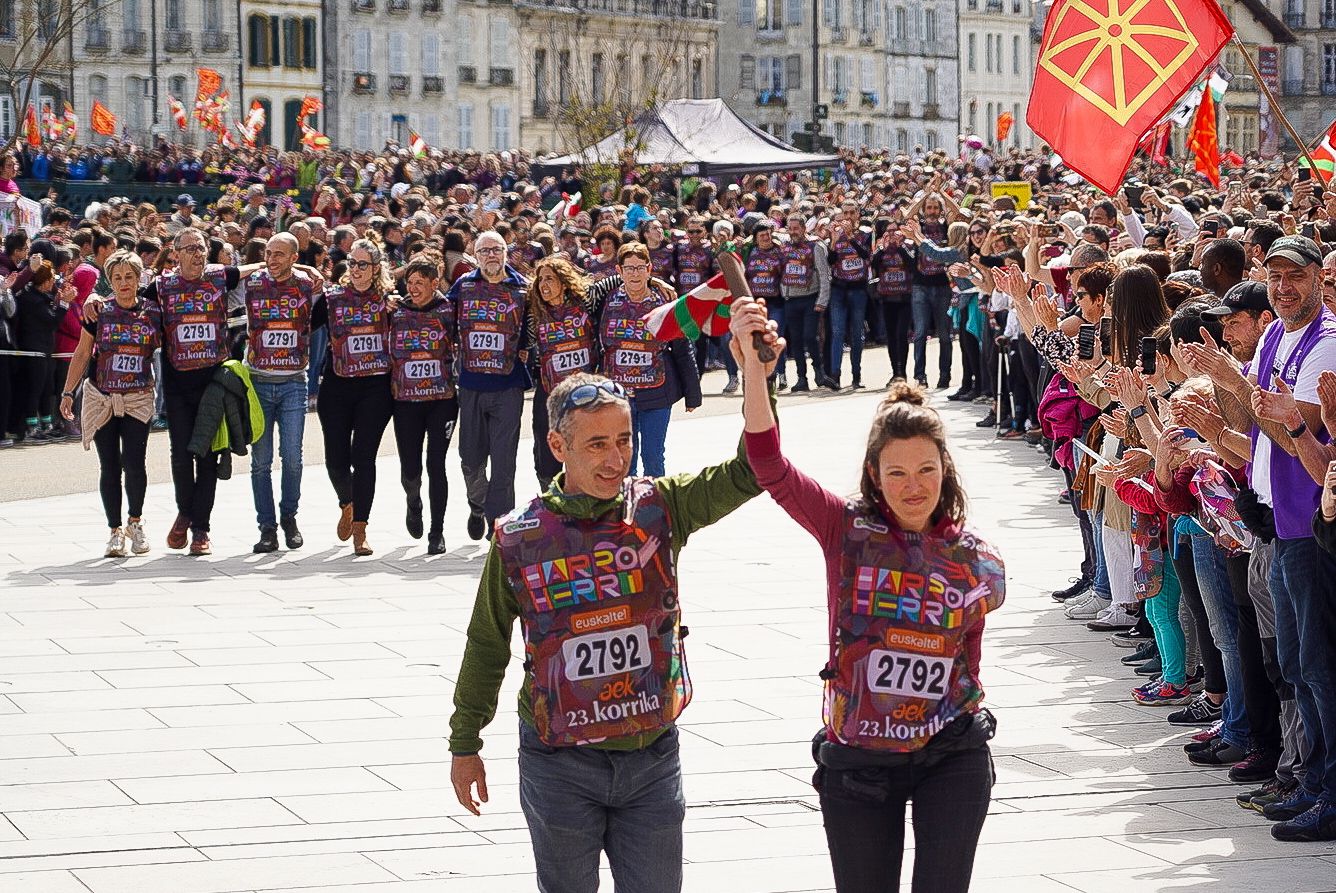
.jpg)


